Regional Disparities in Educational Outcome, Spatial Spill-over, and the Determinants
Evidence from 34 Provinces in Indonesia
Ragdad Cani Miranti
BPS- Central Bureau Statistics of Indonesia
Prepared for 2021 Asian Seminar in Regional Science
October 8th 2021
[slides available at: https://asrs-slides-2021.netlify.app/#1]
Motivation:
- Regional disparities in educational outcomes still persist
- Financial resources have been intensified
- Government of Indonesia implemented the rule of 20 percent budgeting for educational funds.
- There are relative few studies that evaluate the role of spatial effects on the educational process.
- Lack of academic literature on educational development at the sub-national level in Indonesia.
Research Question:
- Does role of neighborhood effect exist in altering the educational outcomes between proximate provinces?
- What are the significant variables affecting the educational outcomes across provinces?
- How is the magnitude of those variables and spill-over effects to the educational outcomes across provinces?
Methods:
- Spatial autocorrelation (Moran's I and LISA)
- Spatial Panel Models (SAR,SEM,SAC,SDM region-fixed effect)
Main Results:
Significant Spatial Autocorrelation at the province level.
Spatial model
- Spatial Durbin Model is the best specification model
- Number of educational institutions and pupil-teacher ratio are two key factors affecting educational outcomes across provinces in Indonesia
- Number of educational institutions (elementary school and senior high school) have indirect effect to the educational outcome.
Policy Implication
- Increasing spatially better coordination and cooperation on educational development connectivity between local governments especially in the Eastern part and outer islands
- Improving educational infrastructures
Outline of this presentation
Introduction and Data
Spatial autocorrelation
- Moran's I Scatter Plot
- Local Indicators of Spatial Autocorrelation
Spatial Panel Model
- Cross-sectional dependence test in the panel data
- OLS Fixed Effect vs Some Spatial Panel Model with Region Fixed-Effect
- Direct and Indirect Effect
Concluding Remarks
[ Slides and paper available at: https://asrs-slides-2021.netlify.app/#1]
(1) Some stylized facts
Educational Outcome disparities across districts over time
Educational Outcome disparities across islands over time
Disparities in mean years of schooling across districts over time
 Note: X-axis reflects mean years of schooling, Y-axis reflects expected years of schooling, human development index is reflected by the dot size and name of island is reflected by the dot color
Note: X-axis reflects mean years of schooling, Y-axis reflects expected years of schooling, human development index is reflected by the dot size and name of island is reflected by the dot color
Violin Chart of Mean Years Schooling Dispersion across Islands in Indonesia
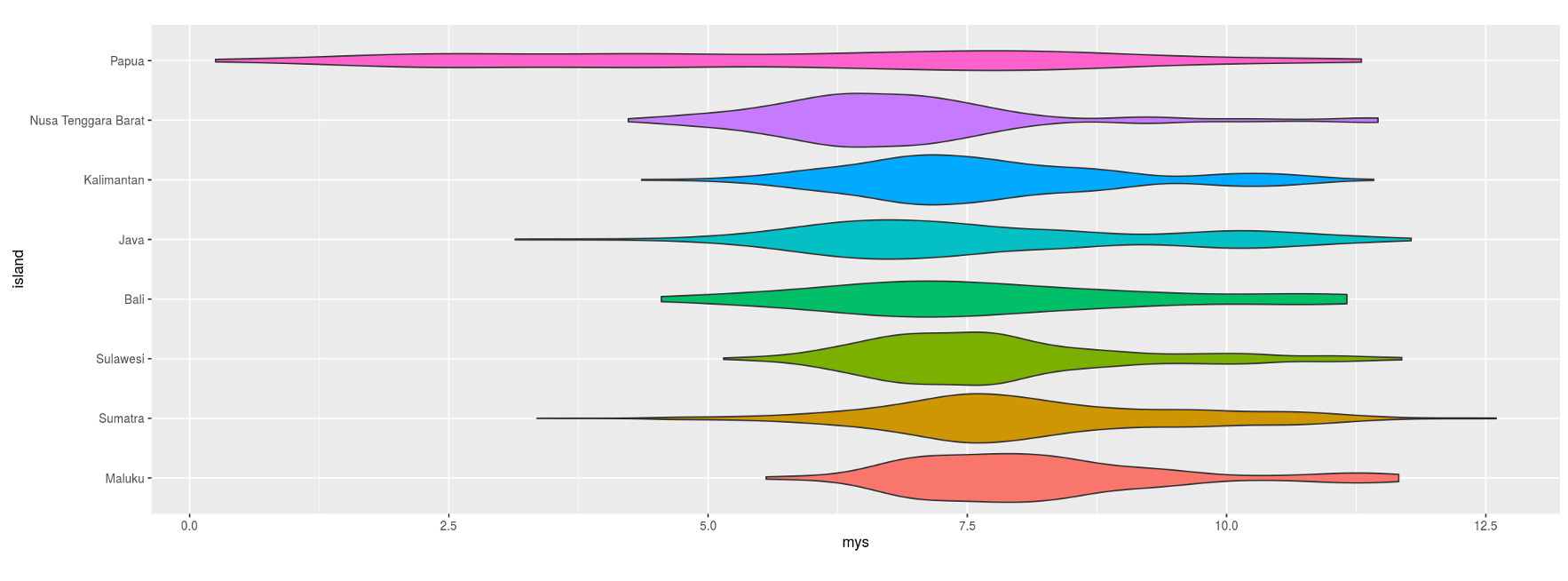
(1) Data
Mean years of schooling 2010-2018 at province level
Expected years of schooling 2010-2018 at province level
Number of elementary schools, junior high schools, and senior high schools 2010-2018 at province level
Pupil-teacher ratio in elementary school, junior high school, and senior high school
All data are derived from Central Bureau Statistics of Indonesia (BPS-Statistics Indonesia)
(3) Spatial Autocorrelation
Global Spatial Autocorrelation : Moran's I Statistics
Local Indicators of Spatial Autocorrelation (LISA)
Global spatial Autocorrelation
Mean Years of Schooling
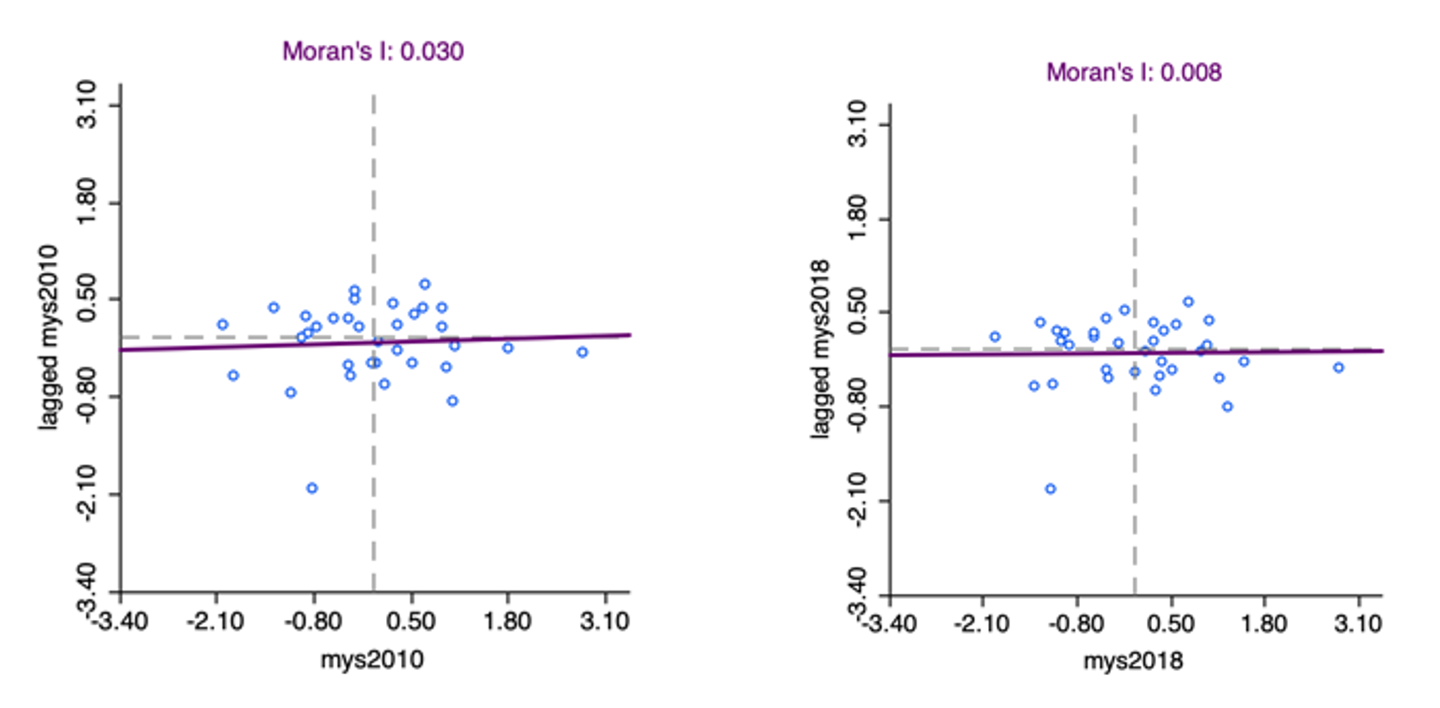 Global spatial autocorrelation is measured based on the Moran’s I, which is statistically significant at 5% level for all years.
Global spatial autocorrelation is measured based on the Moran’s I, which is statistically significant at 5% level for all years.
Expected Years of Schooling
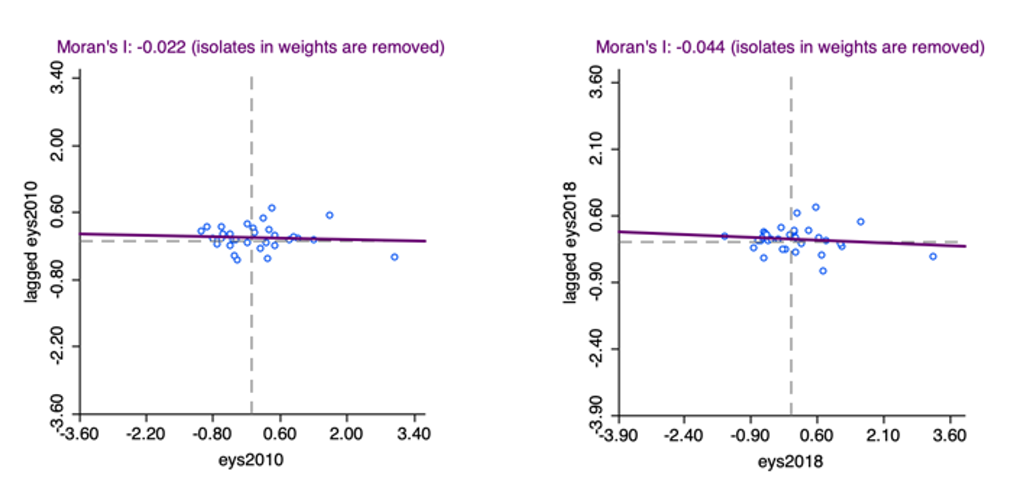
Local Indicators of Spatial Autocorrelation (LISA)
Mean Years of Schooling Initial period (2010)
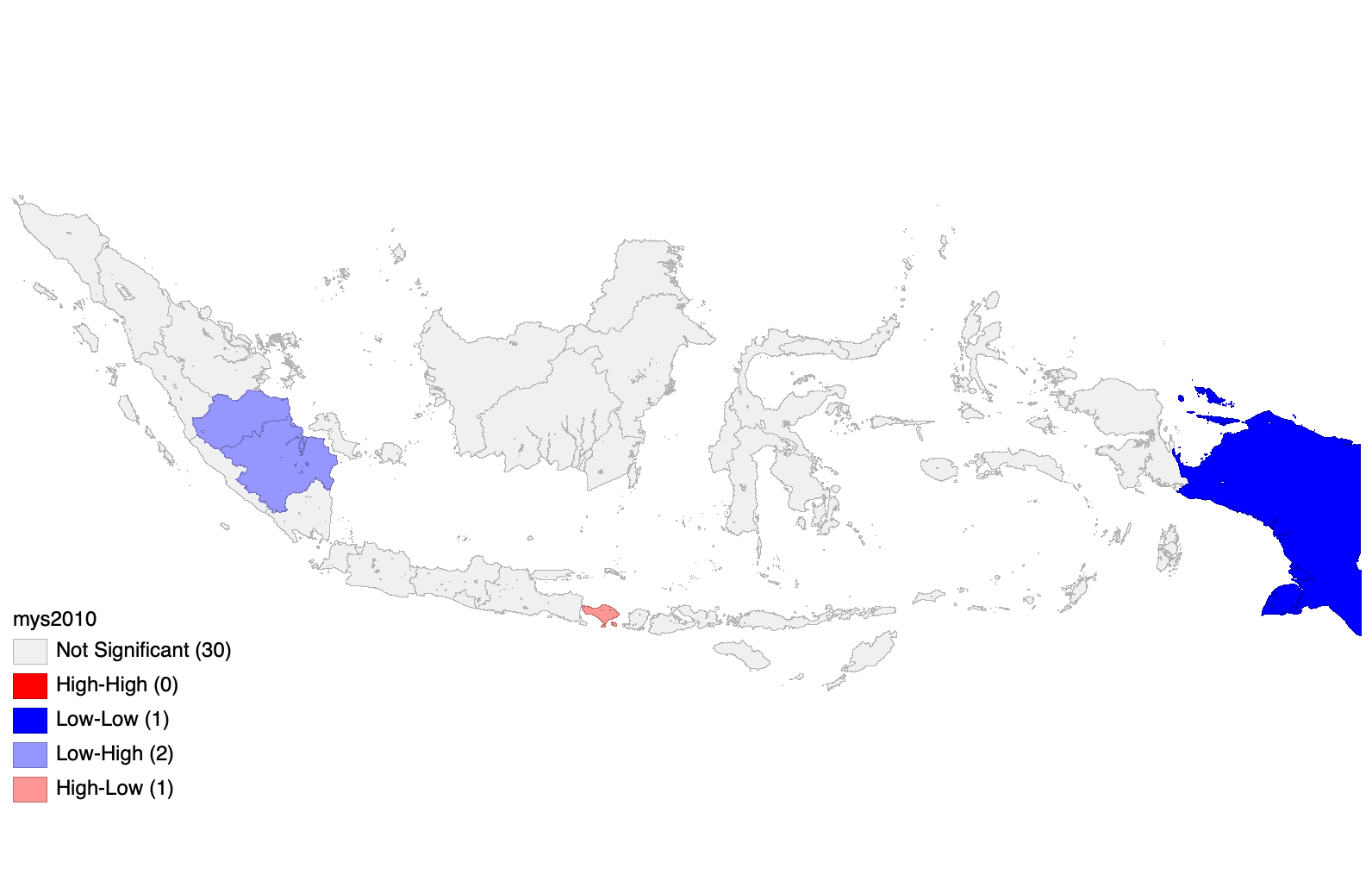
Note : Local spatial dependence is significant for both spatial clusters and spatial outliers at 5% significance level
Local Indicators of Spatial Autocorrelation (LISA)
Mean Years of Schooling Initial period (2018)
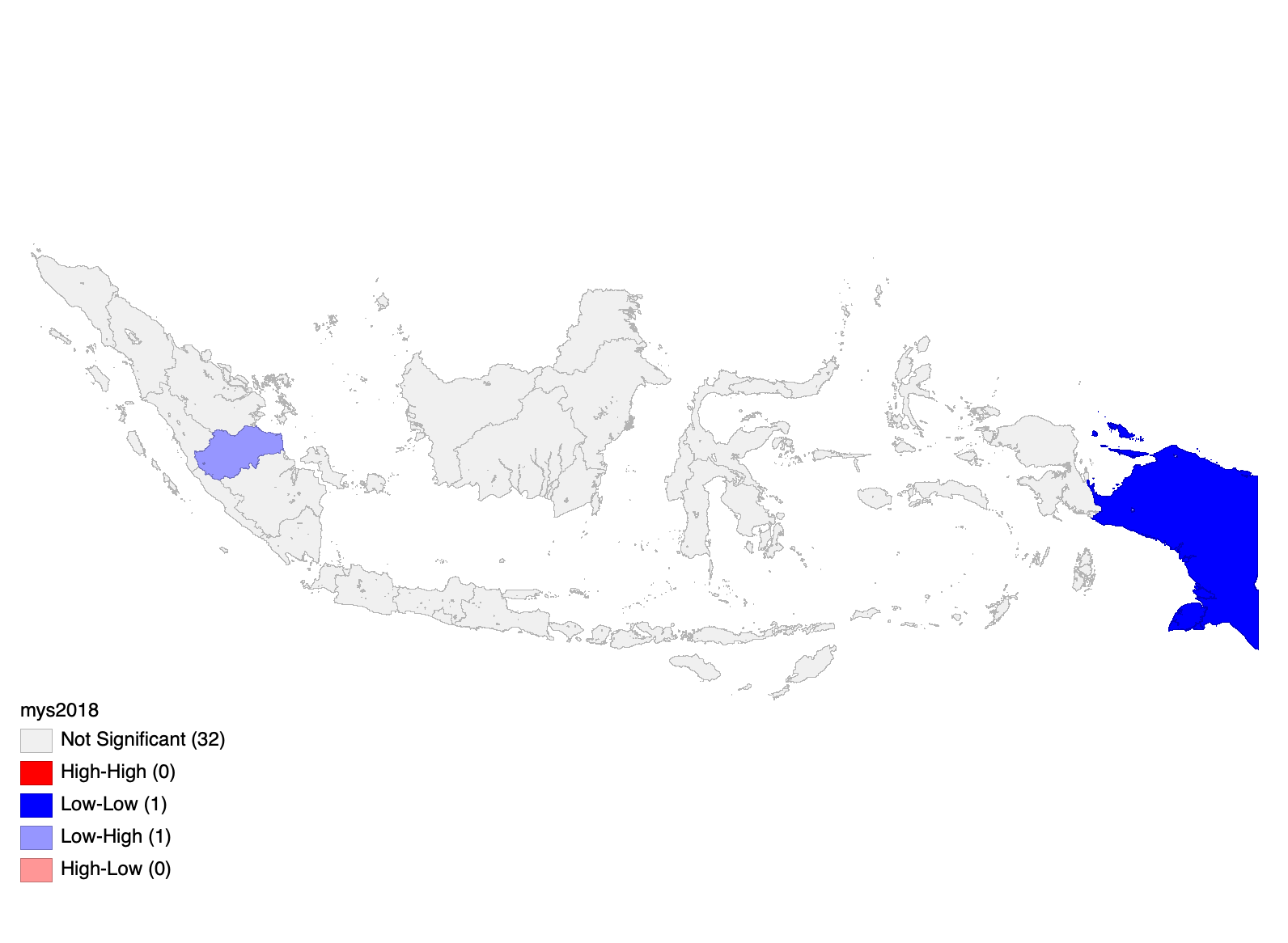
**Significant cold-spot (spatial cluster with low mean years of schooling surrounded by low mean years of schooling-cluster) located in Papua Province.
Local Indicators of Spatial Autocorrelation (LISA)
Expected Years of Schooling Initial period (2010)
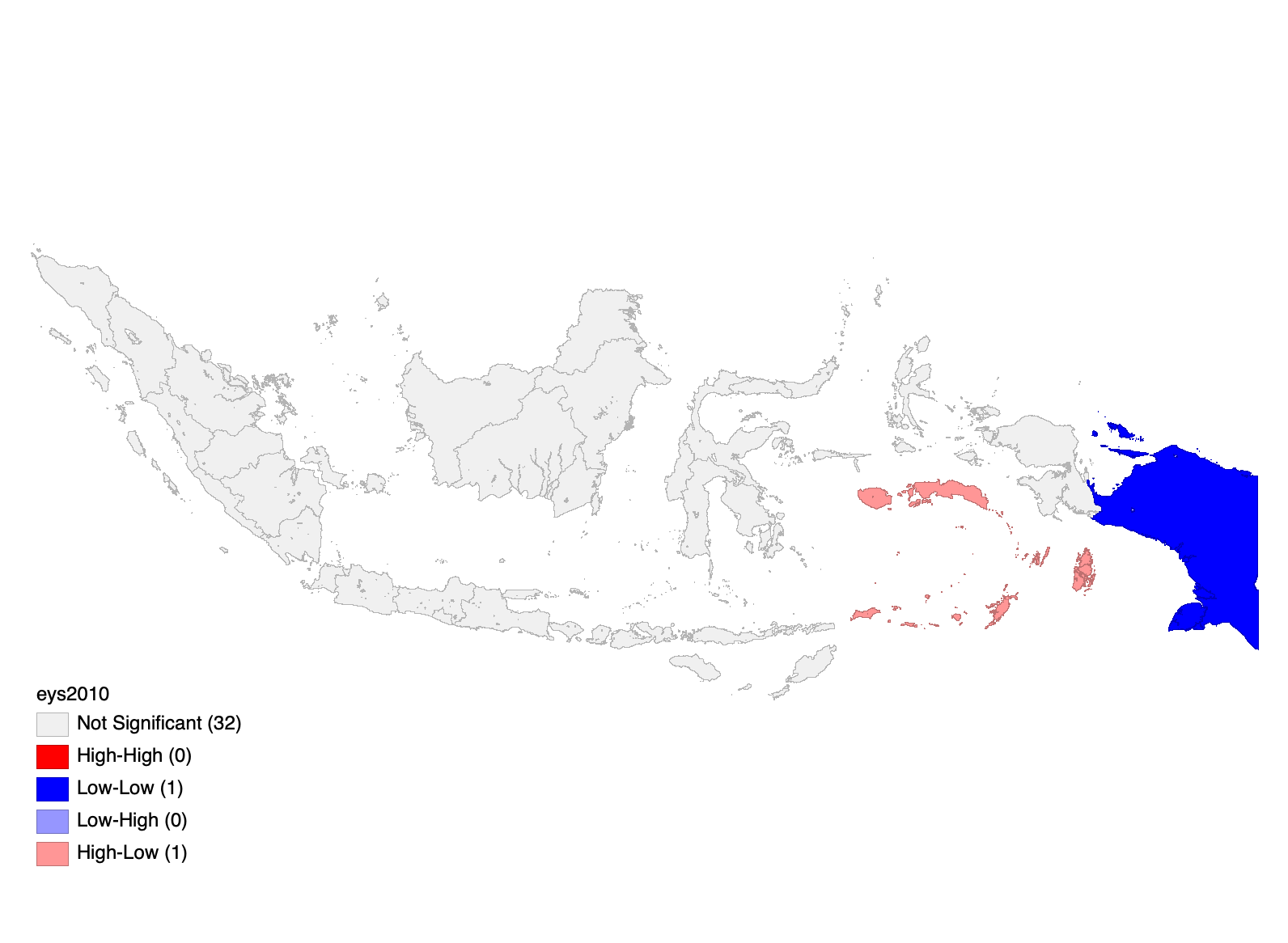
Note : Local spatial dependence is significant for both spatial clusters and spatial outliers at 5% significance level
Local Indicators of Spatial Autocorrelation (LISA)
Expected Years of Schooling Initial period (2018)
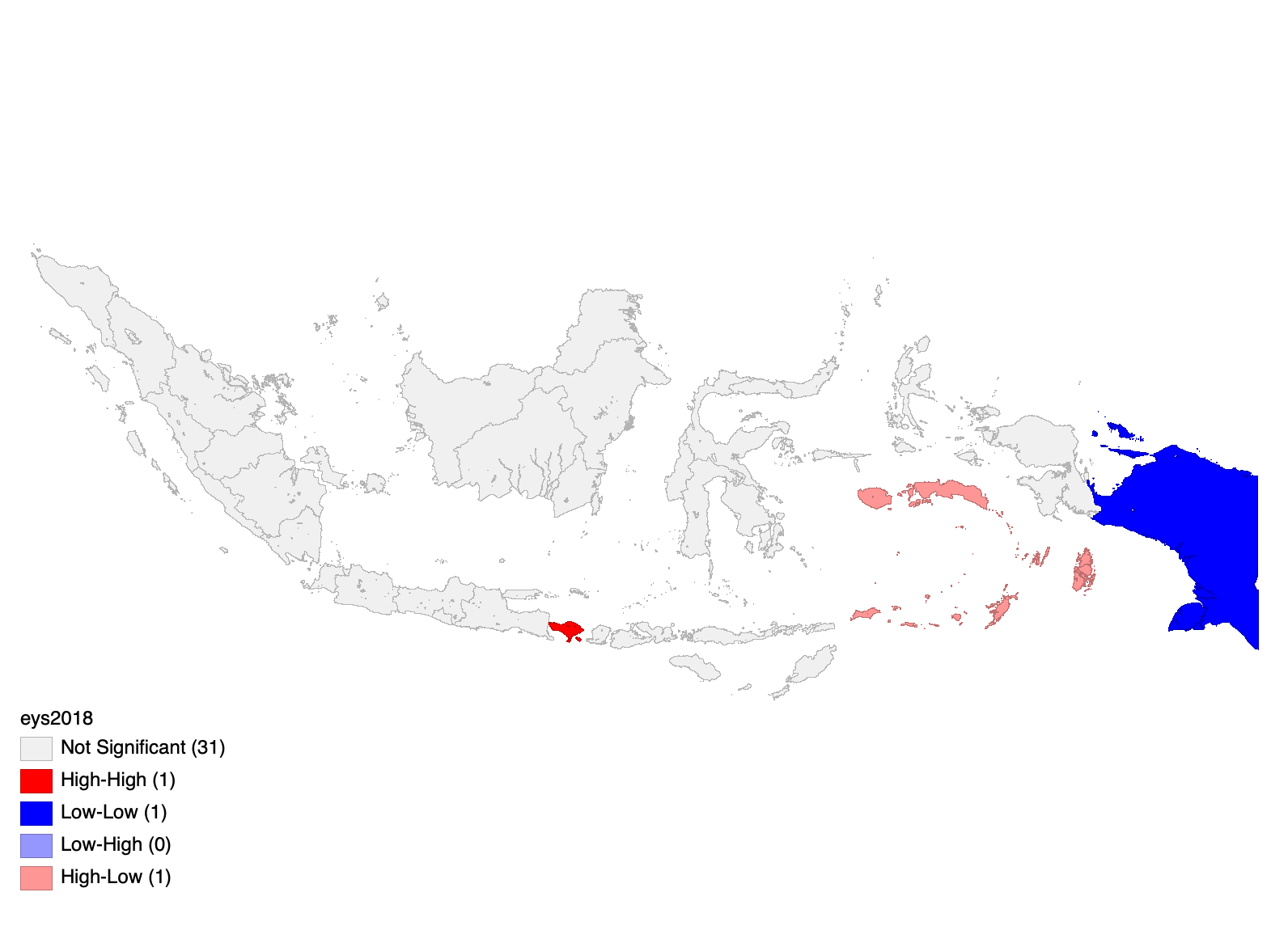
Spatial outlier high-low (spatial cluster with relatively high expected years of schooling surrounded by relatively low expected years of schooling cluster) is only significant in Maluku Province.
Some Spatial Panel Models

Cross-sectional dependence test in the panel data model
Pesaran Test for Model of Mean Years of Schooling

Pesaran Test for Model of Expected Years of Schooling

Spatial Panel Models for Mean Years of Schooling
Spatial Pane Model with Region Fixed-Effect

Spatial Autocorrelation Parameter
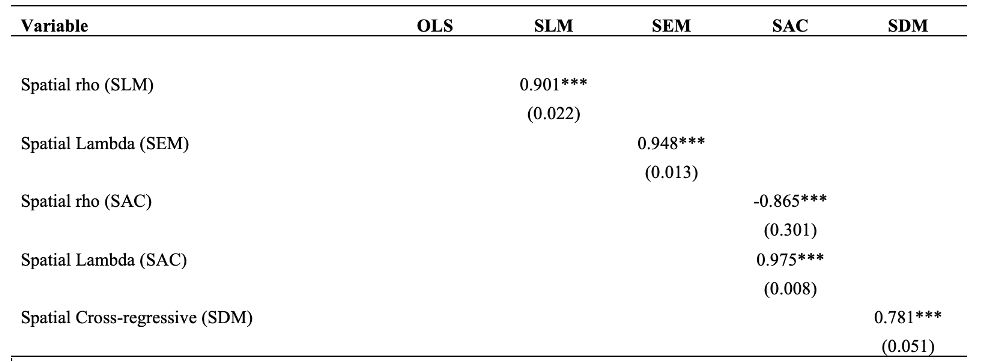
Spatial Panel Models for Expected Years of Schooling
Spatial Panel Model with Region Fixed-Effect
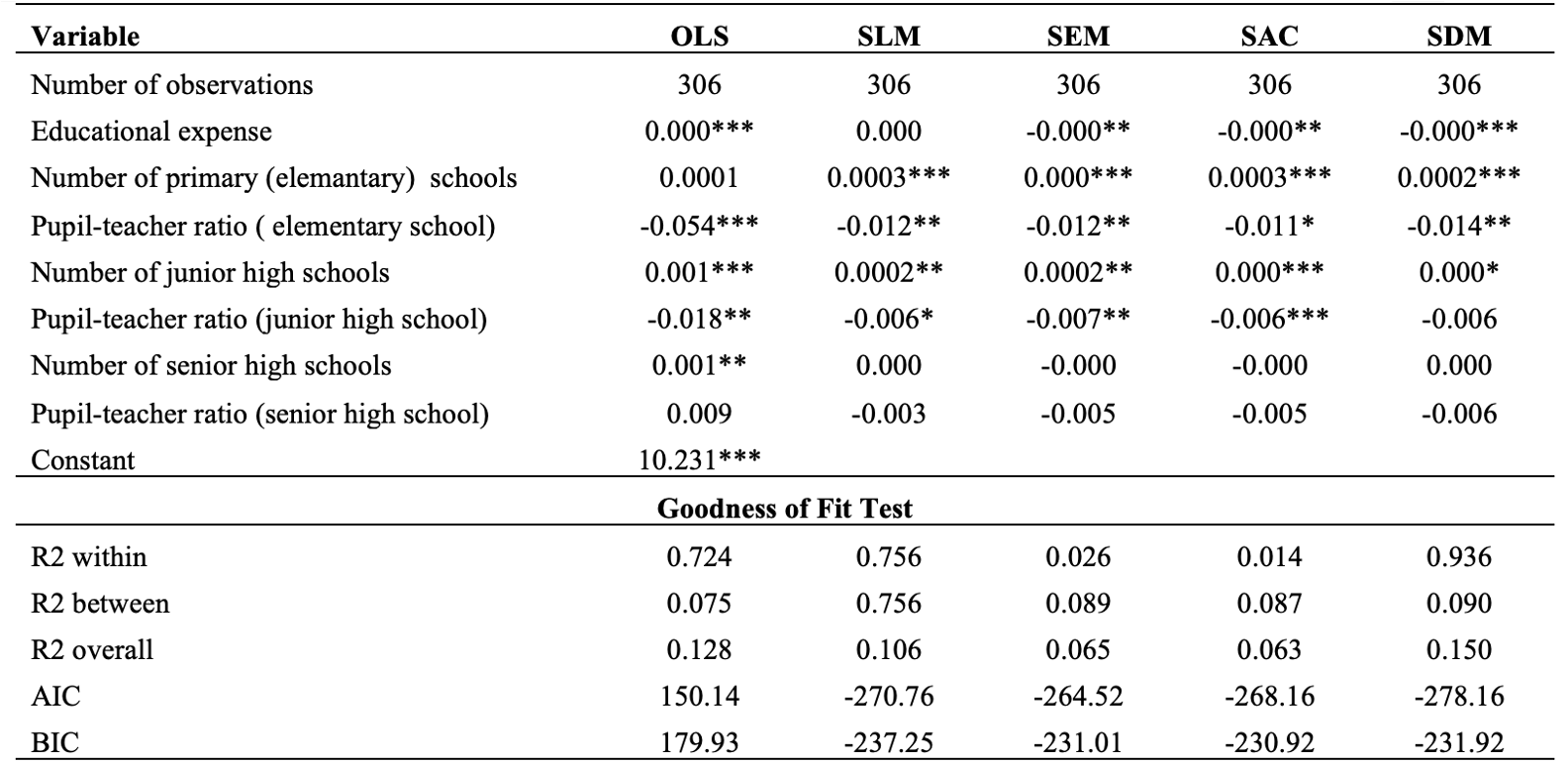
Spatial Autocorrelation Parameter
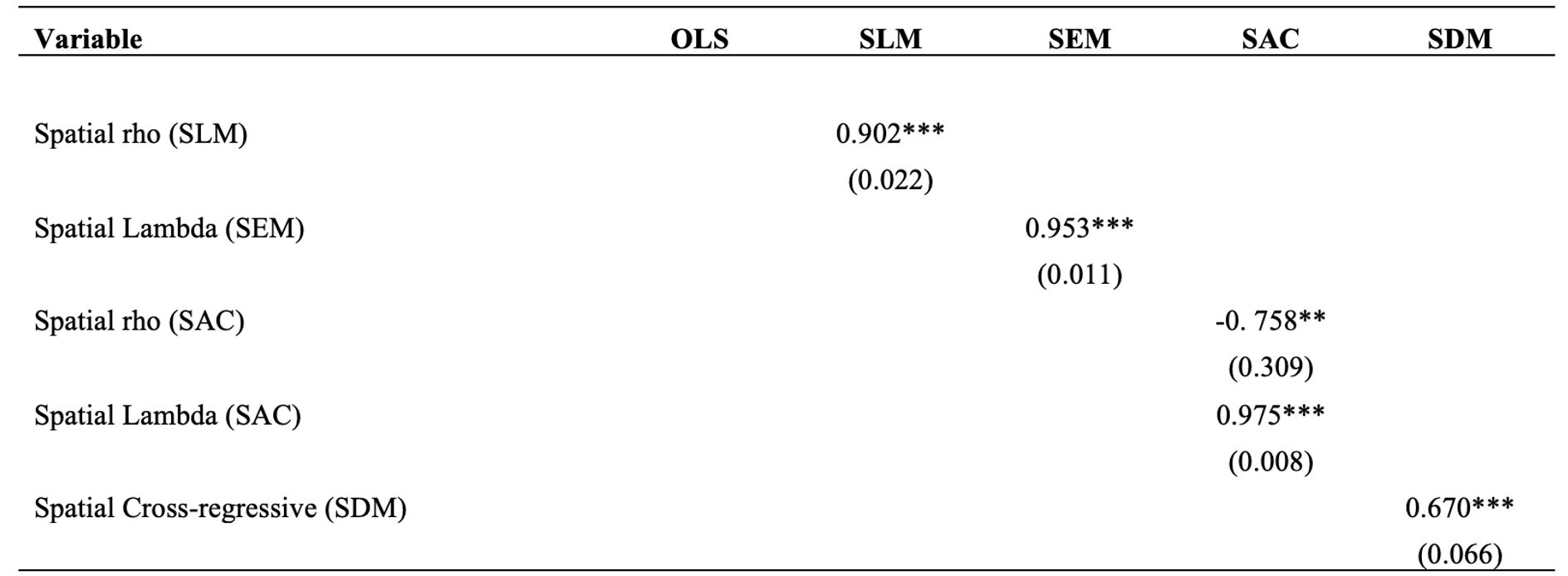
Direct and Indirect Effect
Mean Years Schooling
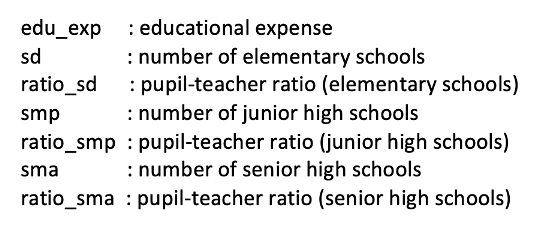
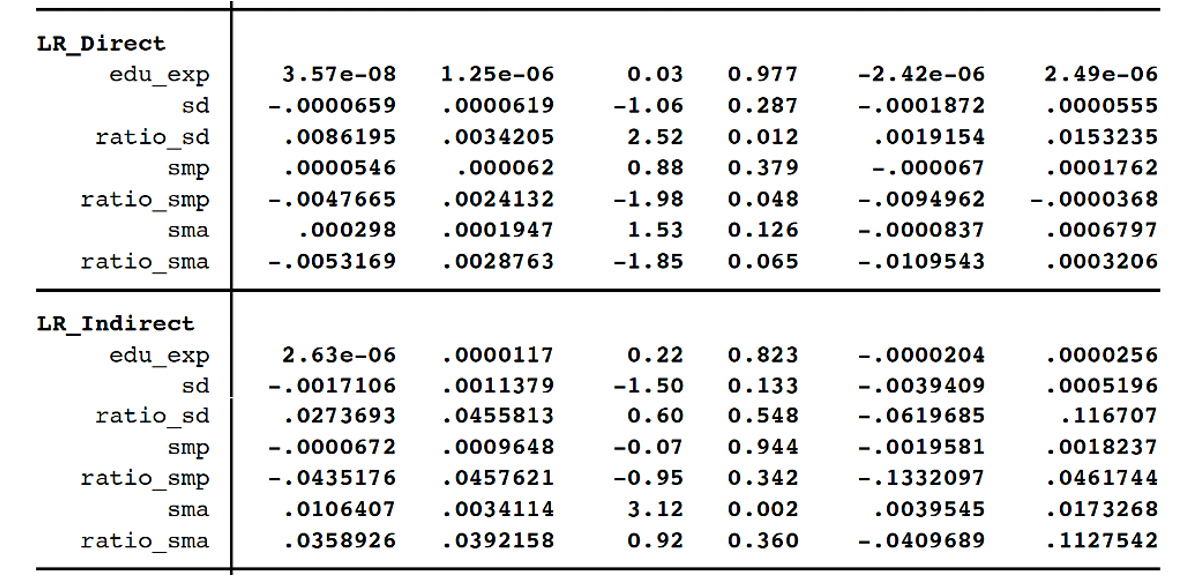
Direct and Indirect Effect
Expected Years of Schooling
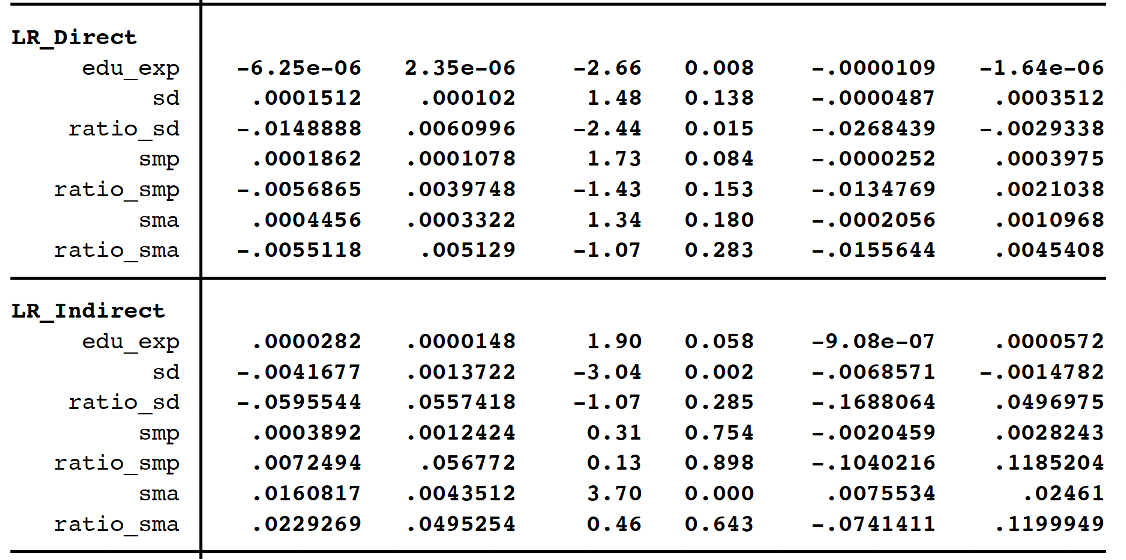
(5) Concluding Remarks
Inequality still matters. Eastern part of Indonesia need to be the priority of educational development.
The availability of educational institutions in each level and the pupil-teacher ratio are vital factors to improve the educational outcomes in Indonesia.
Spill-over effect does exist. The indirect effect of availability of schools to the mean years of schooling and expected years of schooling is positive and significant.
-
Thank you very much for your attention
Slides and working paper available at: https://asrs-slides-2021.netlify.app/#1]

Quantitative Regional and Computational Science lab